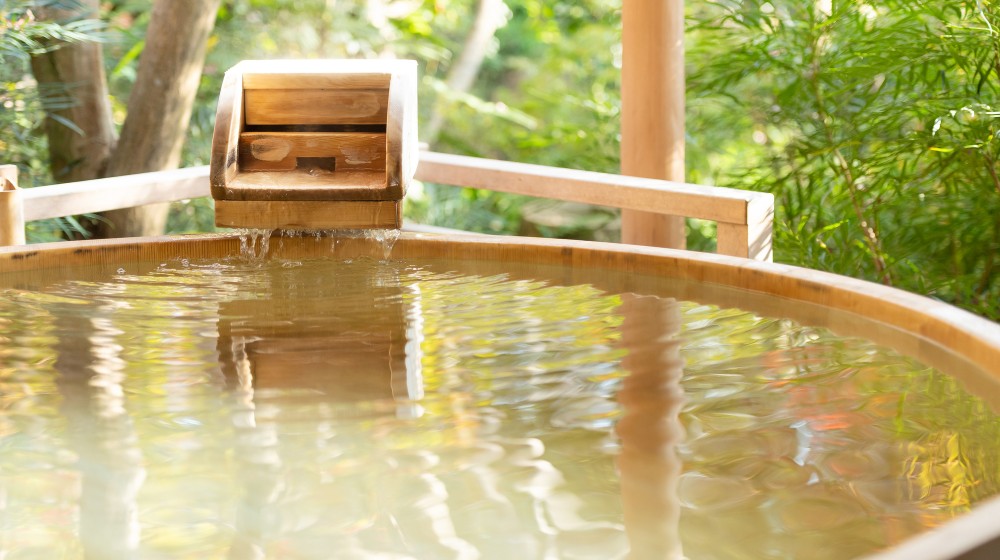
Spring quality for Onsen
The effect of hot springs on the body varies depending on the quality of the springs. There are multiple types of hot springs, and each has symptoms that can be expected to be effective and symptoms that should be avoided by bathing. If you know the types of hot springs, you will know the benefits and precautions of hot springs. In Japan, facilities that provide hot springs for bathing or drinking are obliged to post the name of the hot spring, the quality of the spring, and precautions in an easy-to-understand place in the facility.
In this article, we will introduce the quality of hot springs in Japan that you need to know in order to benefit your beauty and health and fully enjoy them. In addition to the characteristics, efficacy, and precautions of each spring quality, we have summarized typical hot spring resorts.
The quality of the springs can be used as a reference when choosing hot springs for health and beauty purposes. If you know the quality of the hot springs, you can make your hot spring bathing not only relaxation, but also a Japan-style beauty and health experience.
What is spring quality?
Spring quality is the chemical property of a hot spring. The quality of the spring is determined by the type and content of chemical components contained in the hot spring.
The quality of the spring affects the texture, efficacy, smell, and color of the hot spring. If you look at the quality of the springs, you can get a sense of the character of the hot springs.
Hot springs are classified according to the quality of the springs.
Among hot springs, hot springs that contain certain ingredients and are suitable for medical treatment are called therapeutic springs. Therapeutic springs are given names of quality such as simple hot springs and carbon dioxide springs. If the hot spring does not meet the standards of a therapeutic spring, there is no name of the quality of the hot spring.
When we generally refer to "hot springs," we mean "therapeutic springs." Due to the difference in the quality of the springs, you can enjoy different hot water in each hot spring resort.
There are "indications" and "contraindications" for therapeutic springs.
Indications are symptoms that can be expected to be effective with each therapeutic spring. There are two types of indications: "general indications" that are common regardless of the quality of the spring, and "indications for each spring quality" that differ depending on the quality of each spring.
Contraindications are diseases or conditions that can have a negative effect on the body even if you take a single bath or drink from a hot spring. There are three types of contraindications: common "general contraindications for hot springs", "contraindications by spring quality" that differ depending on the quality of the spring, and "contraindications by ingredient" that differ depending on the ingredients contained.
Simple springs
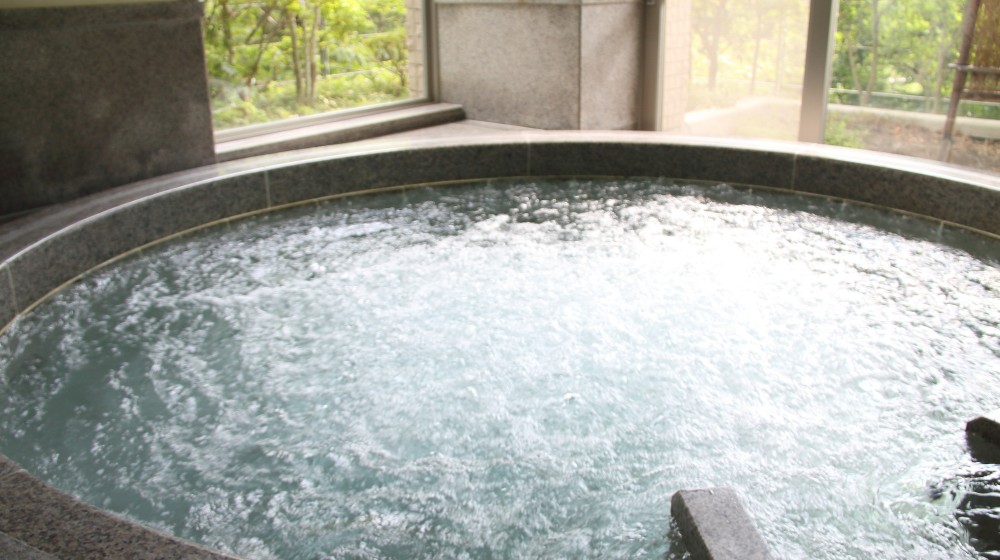
Judgment Criteria
The amount of dissolved substances (excluding gaseous substances) in 1 kg of hot spring water is less than 1,000 mg, and the spring temperature at the time of gushing is 25°C or higher. Of these, those with a pH of 8.5 or higher.
Features
It is the most abundant spring quality in Japan. It is not that the ingredients are simple, but that the amount of ingredients contained in the hot water does not reach a certain amount. It is characterized by soft to the touch and less irritating with hot water without habit. Since it is less irritating to the skin, it is suitable for rest and rehabilitation after surgery. When bathing, there is a feeling that the skin is smooth. Hot water is colorless and transparent, basically tasteless and odorless.
It is also known as "family bath" and "beautiful skin bath". Even babies and people with delicate skin can bathe without splashing in hot water, and the whole family can enjoy it. In particular, there are weakly alkaline simple hot springs (pH 7.5 or higher) and alkaline simple hot springs (pH 8.5 or higher). These hot springs remove dead skin cells from the skin, leaving the skin smooth and smooth after bathing.
Efficacy
Indications
autonomic instability, insomnia, depressive states
Examples of Onsen areas
Karulus Onsen (Hokkaido), Kinugawa Onsen (Tochigi), Gero Onsen (Gifu), Dogo Onsen (Ehime), Yufuin Onsen (Oita), etc.
Carbon dioxide springs
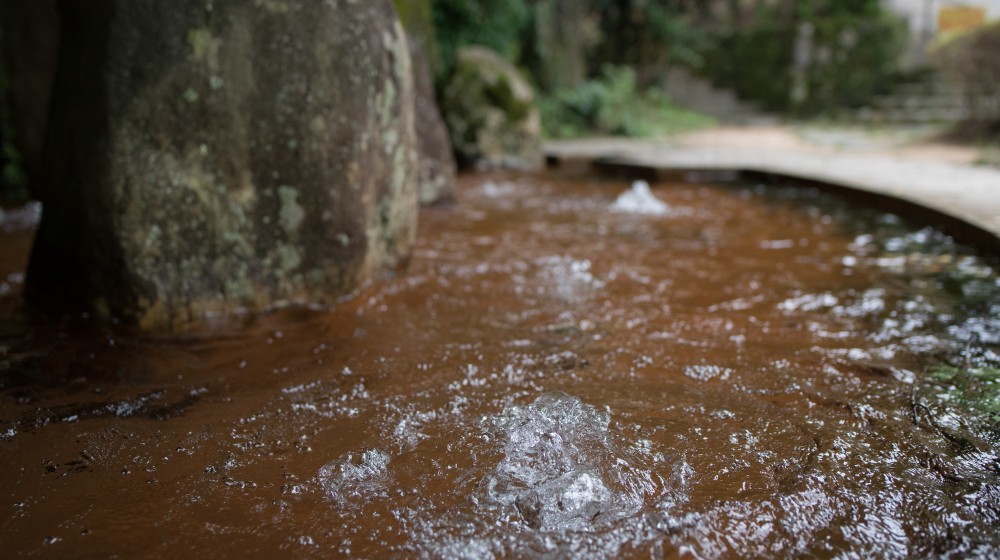
Judgment Criteria
One kg of hot spring water contains more than 1,000 mg of free carbon dioxide (free carbonic acid) (CO2).
Features
The quality of the springs is relatively rare in Japan. It is also known as "bubble water". It is colorless and transparent, the water temperature is often low, and when you take a bath, carbonic acid bubbles adhere to your whole body, giving you a refreshing feeling. However, if the spring temperature is high or heated, carbon dioxide gas may volatilize. It is a tasteless, odorless, unsweetened mineral carbonated water, but it may have a slight sour taste.
When carbon dioxide gas is absorbed from the skin, blood vessels dilate and blood circulation is promoted. The low water temperature of around 35°C gradually warms the body without putting a burden on the heart. At the temperature of the spring, where bubbles are formed, it feels cool at first, but gradually it becomes warm.
Efficacy
Indications
<For bathing>
cuts, peripheral circulatory disorders, sensitivity to cold, autonomic instability
<For drinking>
Gastrointestinal dysfunction
Contraindications
Drinking when diarrhea
Examples of hot spring resorts
Karasawa Onsen (Nagano), Kosaka Onsen (Gifu), Funakoya Onsen (Fukuoka), Nagayu Onsen (Oita), etc.
Hydrogen carbonate springs
Judgment Criteria
The amount of dissolved substances (excluding gaseous substances) in 1 kg of hot spring water is 1,000 mg or more, and the main component of anions is hydrogen carbonate ions.
Features
The water is colorless and transparent and smooth to the touch, but it can also be tan or greenish-brown. According to the main components of cations, it is classified into "sodium-bicarbonate spring", "calcium-bicarbonate spring", "magnesium-bicarbonate spring", etc.
Calcium-bicarbonate springs / Magnesium-bicarbonate springs
It has a sedative effect and works to reduce inflammation. Drinking hot springs have the function of lowering blood sugar levels, neutralizing stomach acid, and rejuvenating the stomach. It also promotes the excretion of uric acid with a diuretic effect. Calcareous thermal sediments and precipitates may be produced. It may have a bitter taste, as well as a gold-like or medicinal odor.
Sodium bicarbonate springs
It promotes blood circulation and softens old keratin. It also removes sebum and dirt to make the skin smoother. Therefore, it is said to be a "hot water for beautiful skin". When sebum decreases, the protective power of the skin weakens. After taking a bath, the skin becomes dry and the water cools easily, so it is also called "refreshing water". In drinking springs, it activates the work of the stomach and aids digestion. It stimulates the secretion of bile and improves the work of the liver and pancreas. It has a peculiar condiment of baking soda, but it is easy to drink. There may also be a gold odor or a medicinal smell.
Efficacy
Indications
<For baths>
Cuts, peripheral circulatory disorders, sensitivity to cold, xerosis of the skin
<For drinking>
Gastroduodenal ulcer, reflux esophagitis, impaired glucose tolerance (diabetes), hyperuricemia (gout)
Contraindications
Potable sodium-bicarbonate springs are similar to chloride springs
Examples of Onsen areas
Naruko Onsen (Miyagi), Hirayu Onsen (Gifu), Ureshino Onsen (Saga), Hitoyoshi Onsen (Kumamoto), Myomi Onsen (Kagoshima), etc.
Chloride springs
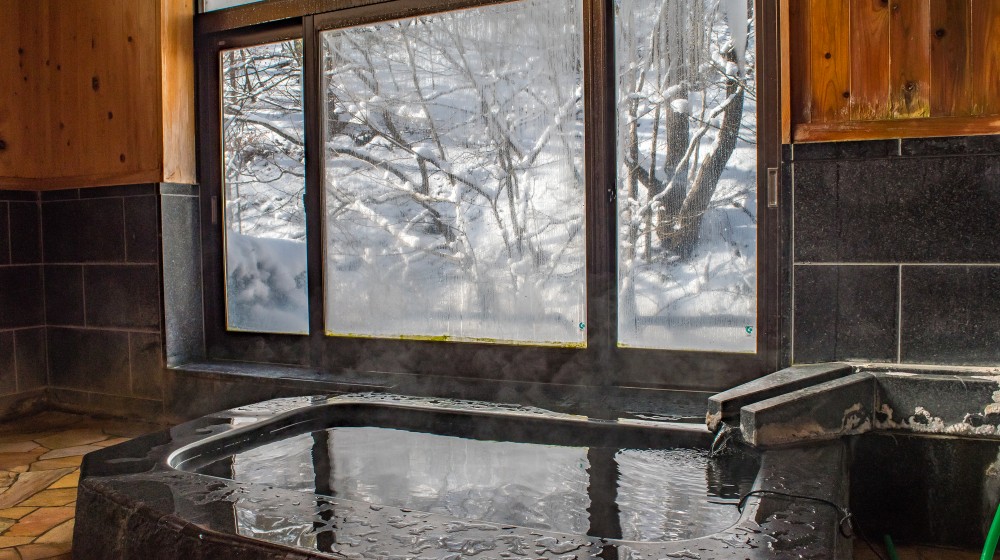
Judgment Criteria
The amount of dissolved substances (excluding gaseous substances) is more than 1,000 mg in 1 kg of hot spring water, and the main component of anions is chloride ions.
Features
It is a colorless and transparent hot water with salt as the main component, and it is a relatively common spring quality in Japan. According to the main components of cations, it is classified into "sodium-chloride spring", "calcium-chloride spring", "magnesium-chloride spring", etc. Since the main ingredient is salt, it is salty when drunk, and it feels bitter if the salt concentration is high or there is a lot of magnesium. The more salt there is, the more sticky it will be.
Chloride springs are also known as "hot water" and "wound water". Salt adheres to the skin to prevent pores and prevent sweat from evaporating. Therefore, the body temperature drops slowly after the bath, and the feeling of warmth continues. The salt coating also has a moisturizing effect and prevents the skin from drying out. Due to the bactericidal action of salt, it is effective for cuts and burns.
Efficacy
Indications
<For baths>
cuts, peripheral circulatory disorders, sensitivity to cold, depressive states, xerosis of the skin
<For drinking>
Atrophic gastritis, constipation
Contraindications
<For drinking>
Kidney disease, hypertension, general swelling, and hyperthyroidism are contraindicated in hot springs containing iodine.
Examples of Onsen areas
Hijiori Onsen (Yamagata), Kinosaki Onsen (Hyogo), Ibusuki Onsen (Kagoshima), Shiman Onsen (Gunma), Ito Onsen (Shizuoka), etc.
Sulfate springs
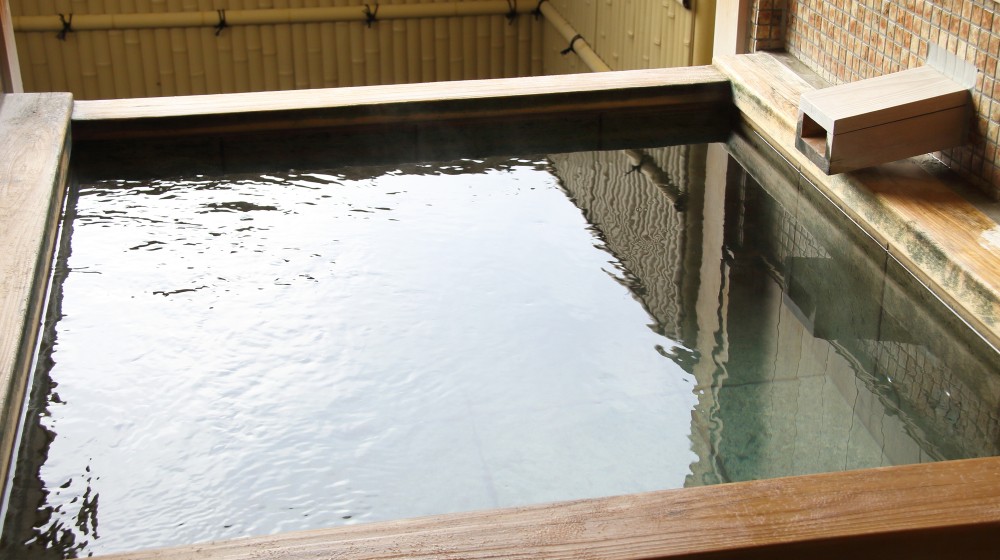
Judgment Criteria
The amount of dissolved substances (excluding gaseous substances) is more than 1,000 mg in 1 kg of hot spring water, and the main component of anions is sulfate ions.
Features
It is colorless and transparent, and the water has a soft and gentle feel. According to the main component of cations, it is classified into "sodium-sulfate spring", "calcium-sulfate spring", "magnesium-sulfate spring", etc.
Sulfate springs have the function of promoting blood circulation and anti-aging effects. It activates metabolism and helps resuscitate the skin. In drinking springs, it stimulates the secretion of bile.
Sodium sulfate springs
It is said to be a "wound bath" that heals wounds.
The moisturizing and bactericidal action of sodium ions sterilizes the body while warming up the body and relieving pain. Sulfate ions have a resuscitating effect that promotes the production of collagen. It is odorless, but the taste has condiments and bitterness.
Calcium Sulfate Spring
Because it prevents blood vessel troubles, it is called "stroke bath".
The soothing effect of calcium ions relieves pain and inflammation and is effective for vascular symptoms. In addition, because it prevents wrinkles from forming, it is also called "beautiful skin bath". It has a burnt smell and bitterness in taste.
Magnesium Sulfate Spring
Because it prevents blood vessel troubles, it is called "stroke bath".
Magnesium ions have the ability to strengthen the skin's barrier function and have a sedative effect that lowers blood pressure and relieves pain. Sulfate ions stimulate blood circulation. It is odorless, but the taste is bitter.
Efficacy
Indications
<For baths>
cuts, peripheral circulatory disorders, sensitivity to cold, depressive states, xerosis of the skin
<For drinking>
biliary system dysfunction, hypercholesterolemia, constipation
Contraindications
<For drinking>
diarrhea, sodium-sulfate springs are similar to chloride springs
Examples of Onsen areas
Ikaho Onsen (Gunma), Hoshi Onsen (Gunma), Yamanaka Onsen (Ishikawa), Tamatsukuri Onsen (Shimane), Asamushi Onsen (Aomori), etc.
Iron-containing springs
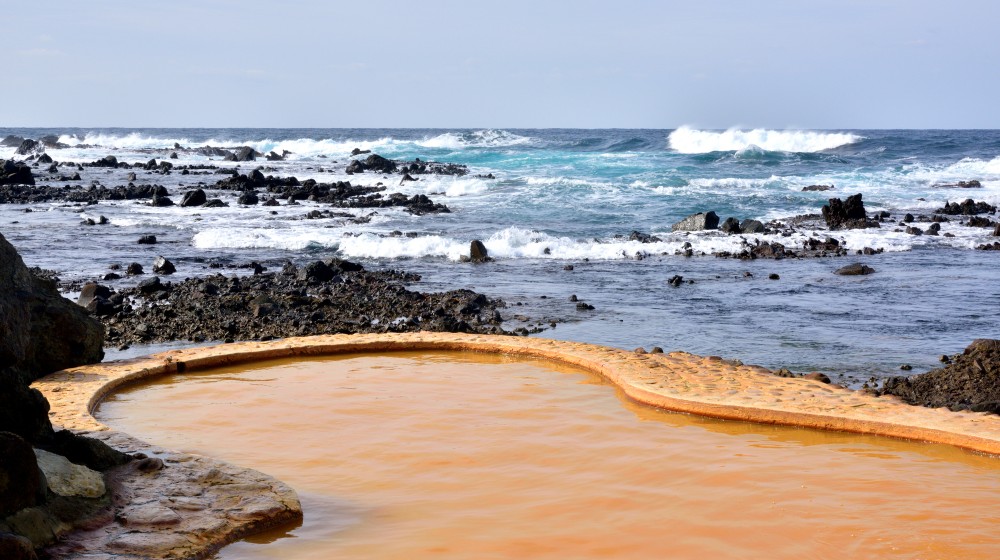
Judgment Criteria
One kg of hot spring water contains more than 20 mg of total iron ions (Iron II or Iron III). According to anions, they are classified into bicarbonate and sulfate types.
Features
In Japan, iron-containing springs are a rare quality of springs. When the hot spring springs up, it is colorless and transparent, but when it comes into contact with air, the iron oxidizes and becomes reddish-brown. Therefore, it is sometimes referred to as red hot water. When bathing, it warms up well.
The sulfate type, which is combined with sulfate ions, is strongly acidic and has a high bactericidal and heat-retaining effect. Therefore, it is called "skin disease bath". If it is highly acidic, there is a tingling sensation. It has a golden odor and has an astringent and sour taste like astringent persimmon. The bicarbonate type, which is combined with bicarbonate ions, has a smooth feel, an iron rust odor, and an iron astringent taste.
It is effective for anemia, but it cannot be absorbed through the skin, so it is drunk. Drinking hot springs increase the secretion of stomach acid, making it easier to absorb iron. However, please note that if you drink a beverage containing tannins such as tea or coffee after drinking, tannins and iron will be combined and iron will not be absorbed.
Efficacy
Indications
<For drinking>
iron deficiency anemia
Examples of Onsen areas
Eyama Onsen (Hokkaido), Koganezaki Immortal Onsen (Aomori), Nagaragawa Onsen (Gifu), Arima Onsen (Hyogo), Yufuin Onsen (Oita), etc.
Sulfur springs
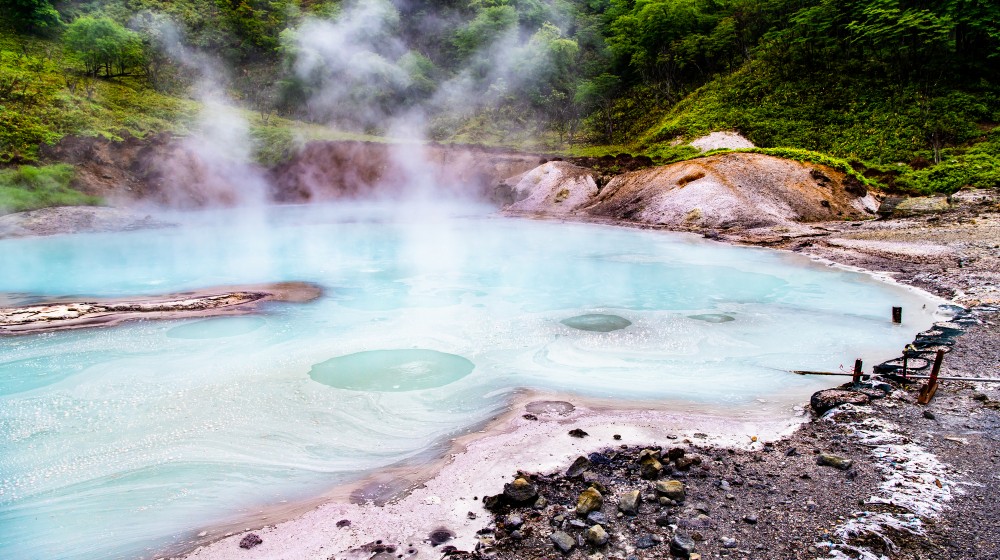
Judgment Criteria
1 kg of hot spring water contains more than 2 mg of total sulfur.
Features
In Japan, the quality of the springs is relatively common. It is classified into sulfur and hydrogen sulfide types. Since it is a highly stimulating spring, it is easy to soak in the hot water, and it is necessary to be careful for the sick, elderly, and people with sensitive skin. The sulfur component discolors the precious metal, so when bathing, try to remove the necklace or ring.
The sulfur type is colorless and transparent ~ emerald green in color, and has a smooth and thick feeling.
It has a high bactericidal effect and is effective for all skin surface problems. It removes excess sebum, so it is suitable for people who are prone to acne or have oily skin. It is a "hot water for beautiful skin" that has the effect of preventing blemishes and whitening.
When drinking, it is effective against lifestyle-related diseases. The taste is bitter with a sulfur smell.
The hydrogen sulfide type has a tingling sensation when it is milky white and highly acidic. It has the effect of relieving asthma and improving the sharpness of the pale. It tastes bitter and sour, and smells like rotten boiled eggs.
Efficacy
Indications
<For baths>
atopic dermatitis, plaque psoriasis, chronic eczema, epidermal suppuration (for the hydrogen sulfide type, peripheral circulatory disorders are added)
<For drinking>
Glucose intolerance (diabetes mellitus), hypercholesterolemia
Contraindications
<For baths>
people with hypersensitivity of the skin, mucous membranes, especially those with photosensitivity (hydrogen sulfide type). Xerostomia in the elderly
<For Drinking>
diarrhea
Examples of Onsen areas
Sourgayu Onsen (Aomori), Hachimantai Onsen (Iwate), Takayu Onsen (Fukushima), Tsukioka Onsen (Niigata), Kurokawa Onsen (Kumamoto), etc.
Acidic springs
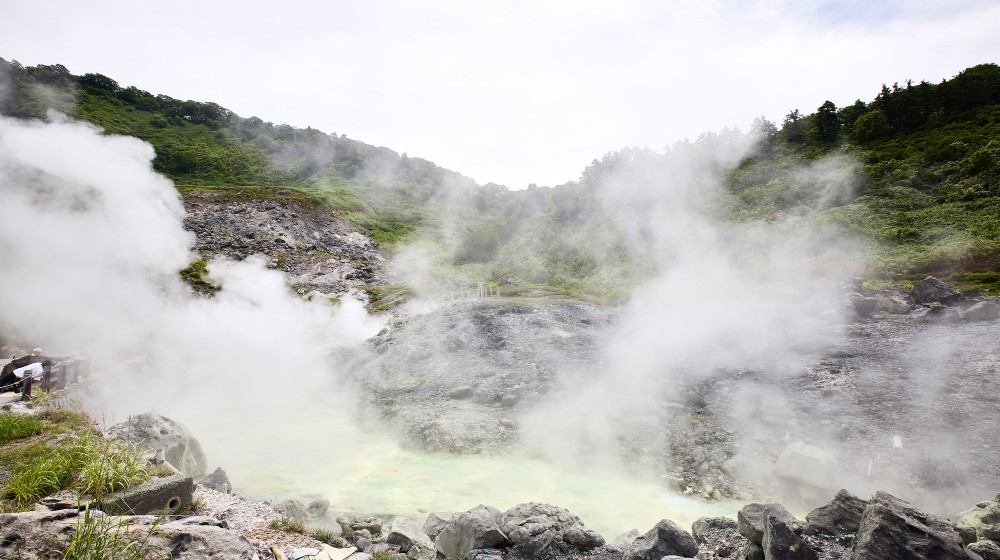
Judgment Criteria
1 kg of hot spring water contains more than 1 mg of hydrogen ions.
Features
It is found in various parts of Japan, but it is a spring quality that is rarely seen in European countries. It is a "skin disease bath" that removes the cause of skin problems on the surface of the skin with strong bactericidal power. It is cloudy ~ gray and has a sour taste and pungent odor. The hot water has a tingling sensation. Since it is highly irritating, it is easy to get hot water, and if you have sensitive skin, it is safer to refrain from bathing. If you have sensitive skin, it is better to wash off the ingredients in the shower after bathing. It has a strong bactericidal power and may cause stomach sores, so it is not suitable for drinking.
Efficacy
Indications
<For baths>
atopic dermatitis, plaque psoriasis, glucose intolerance (diabetes mellitus), epidermal suppuration
Contraindications
For bathing, it is equivalent to a sulfur spring
Examples of Onsen areas
Sugawa Onsen (Iwate), Tamagawa Onsen (Akita), Zao Onsen (Yamagata), Gake Onsen (Fukushima), Kusatsu Onsen (Gunma), etc.
Radium springs
Judgment Criteria
One kg of hot spring water contains more than 30×10-10 curies (8.25 matches or more).
When you hear the word "radioactivity," it seems that it has a bad effect on the body, but it contains a small amount. It has been proven that very small amounts of radiation have a positive effect on the body.
Features
In Japan, radium springs are rare. The main feature is that the effect can be obtained by inhalation. Radon contained in radium springs is a gas and can be inhaled through the respiratory tract. Radon is excreted in about 3 hours after it is taken into the body.
Radium springs can have a wide range of positive effects on the entire body, so they are said to be "hot springs for all diseases".
Hot water is colorless and transparent, tasteless and odorless. If hydrogen carbonate ions are the main component, it will have a smooth feeling. If the acidity is strong, it will tingle.
Efficacy
Indications
<For baths>
hyperuricemia (gout), rheumatoid arthritis, ankylosing spondylitis, etc.
Examples of Onsen areas
Two-pronged Radium Onsen (Hokkaido), Gozu Onsen Village (Niigata), Tochiomata Onsen (Niigata), Masutomi Onsen (Yamanashi), Misasa Onsen (Tottori), etc.
Search by Prefecture
Search by Onsen area
- Hokkaido
- Nagano
- Akita
- Kanagawa
- Yamagata
- Shizuoka
- Gifu
- Hyogo
- Wakayama
- Yamanashi
- Kumamoto
- Oita
- Fukushima
- Tochigi
- Gunma
- Ishikawa
- Shimane
- Ehime
- Saga
- Kagoshima
